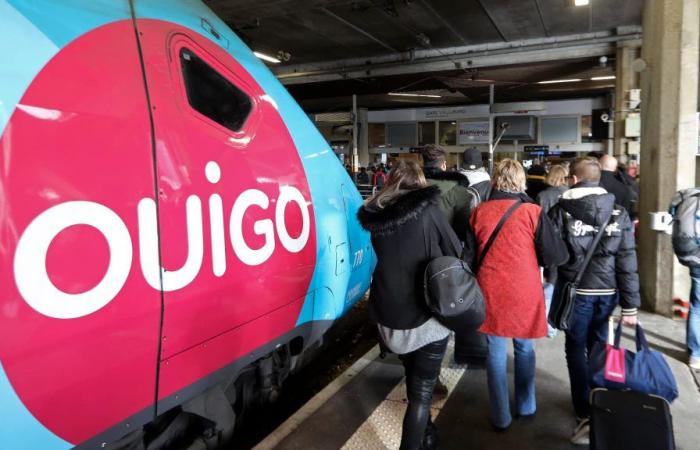Building on the success of its low-cost offer, the railway company is announcing connections to Hendaye and Lille and 12 new trains. Objective, ultimately to offer 8 million additional places per year.
“We are going to multiply Ouigo. It’s a real turning point in French high speed.” The promise from Alain Krakovitch, director of TGV and Intercités at SNCF is clear. As we know, the operator’s low-cost offer is a great success in France with a cumulative 110 million passengers transported over the decade (2013-2023), including 25 million last year.
The operator has therefore decided to considerably strengthen its commercial proposition, “it’s a real turning point”, assures the manager “to answer the question of the purchasing power of the French”.
The first lever is to offer more destinations (more than 50 currently) by 2027.
From December 2025, Ouigo will serve Hendaye via Bordeaux, Dax, Bayonne, Biarritz and Saint Jean-de-Luz. A way of responding to “strong” demand for the Atlantic coast and incidentally preparing a response to Proxima, the new operator which intends to launch towards Bordeaux in 2027. Moreover, a daily round trip will be added to Bordeaux.
The SNCF is studying the service to Lille (which could be launched in 2026 or 2027) and will “strengthen” (without giving further details) those to Strasbourg, Lyon, but also to Languedoc.
Province-province connections (without passing through Paris) are also being studied. Finally, the Paris-Rennes will go from two to three round trips per day.
“Overall, by 2027, Ouigo will serve 75 stations instead of 60, an increase of 25,” explains Alain Krakovitch.
75 stations served instead of 60
Second lever: trains. Ouigo will benefit from 50 trainsets instead of 38 by 2027 thanks to the “mid-life” renovation, that is to say after fifteen to twenty years of service, of classic Inoui TGVs which will therefore join the Ouigo offer and which will be replaced by the new TGV M.
All these trains will also be gradually refreshed and will be called Tango, an operation costing several hundred million euros. Because if the low prices of these TGVs are praised, their comfort is often criticized.
“We have heard from customers who want more seats, more comfort,” underlines the director.
“These new trains offer more comfortable seats, 10% more luggage space, individual sockets, 8 bike hooks and a large relaxation area in a dedicated car to stretch your legs or let the children play,” adds Jérôme Laffon, boss of Ouigo at SNCF.
Rumors spoke of a change in the exterior appearance (the film coating) sometimes considered garish but according to our information, the livery will not change.
This facelift further increases the capacity of its trains, going from 644 seats to 653. The first facelifted trainsets will begin to run at the beginning of 2025 before a gradual deployment until 2029.
Ouigo is profitable for the SNCF
These two levers will make it possible to offer 8 million additional places per year, according to the SNCF. The operator displays its objectives: that Ouigo represents 30% of its high-speed traffic by 2030 compared to 20% today and 33 million customers per year, or 30% more than last year.
With a 90% occupancy rate, the Ouigo model “has been profitable for several years” with more seats in the trains compared to a classic TGV, no purchase of new trains (new with old), more rotations during the day, paid options (luggage, etc.), a 100% online distribution method.
However, for the operator, it is necessary to find the right balance so as not to cannibalize the TGV Inoui, the heart of the SNCF offer.
A risk avoided according to Alain Krakovitch: “Ouigo is 50% induction, that is to say that half of its customers would not have taken the train for such a trip or would simply not have traveled at all. Moreover, during peak periods the TGV Inoui are full, customers therefore switch to Ouigo. It’s a win-win, we play on complementarity.
Olivier Chicheportiche Journalist BFM Business






